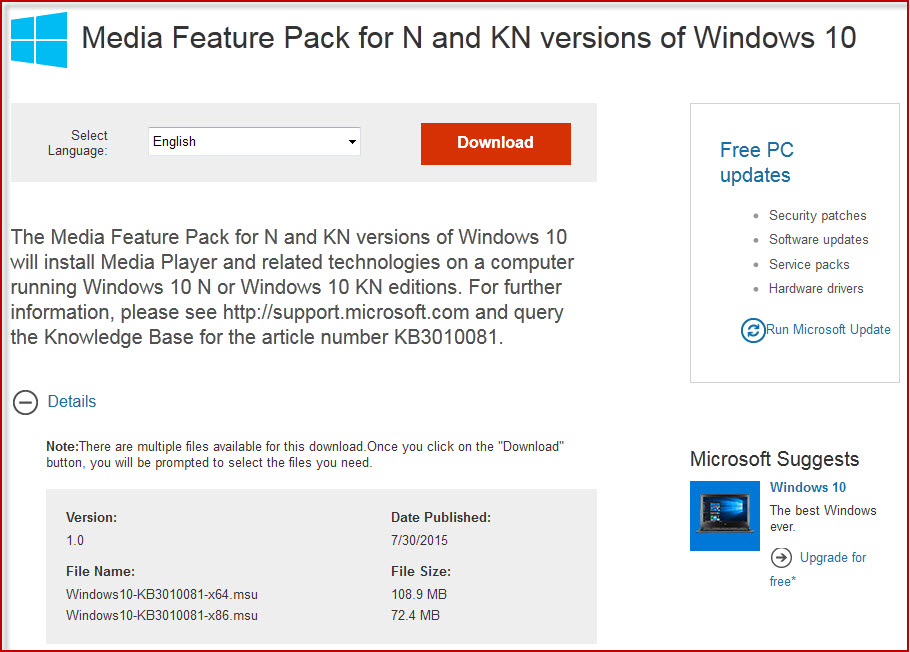Media Feature Pack for Windows 10 N and KN versions
So-called N and KN versions of Windows 10 are designed specifically for legal requirements in certain markets such as the European Union.
The core difference to regular versions of Windows 10 is that they don't include Windows Media Player and certain apps such as Skype, Music, Video or Voice Recorder, that come preinstalled with regular versions of the operating system.
The removal of these features impacts other functionality on the system. Users who upgrade or install Windows 10 N or KN versions won't be able to playback audio or video contents, cannot make use of speech interaction with Cortana, use webcam, or use the PDF viewing component in Microsoft's Edge web browser.
In addition, several media codecs such as MPEG, AAC, H.264 and H.265 that ship with the operating system are not included in N and KN versions of Windows 10.
Microsoft lists software that is impacted directly and indirectly on the company's Knowledgebase.
While it is possible to replace the missing functionality with third-party software for the most part, some functionality cannot be replaced this way. For instance, speech interaction with Cortana remains unavailable as there is no third-party solution available that restores it.
Microsoft released the Media feature pack for Windows 10 N and Windows 10 KN editions recently. It can be used to add the missing components and applications to Windows 10 to restore the functionality.

Basically, when installed, it will turn the N or KN version into a regular version of Windows 10.
The media feature pack is offered as a 32-bit and 64-bit downloads on the Microsoft Download website. The 32-bit version has a size of 72.4 Megabyte, the 64-bit version one of 108.9 Megabyte.
These versions can only be installed on Windows 10 N or KN versions including Home, Pro Education and Enterprise N versions.
Users who run these systems need to download the setup file for their version of the operating system (32-bit or 64-bit), and run it afterwards.
This article was first seen on ComTek's "TekBits" Technology News

- Log in to post comments